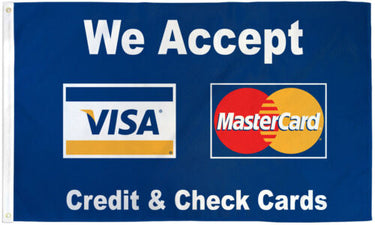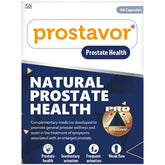Hernia (umbilical)
An umbilical hernia occurs when part of the intestine or fatty tissue protrudes through an opening in the abdominal muscles near the navel (umbilicus). This type of hernia is common in infants but can also affect adults, particularly women who have had multiple pregnancies.
Symptoms
Symptoms of an umbilical hernia can vary depending on the size and severity of the hernia, but common signs include:
- Visible Bulge: A noticeable lump near the navel, which may become more apparent when crying, coughing, or straining.
- Pain or Discomfort: Especially when lifting heavy objects, bending over, or during physical activity.
- Swelling or Tenderness: Around the navel area.
- Redness or Discoloration: In severe cases, the skin over the hernia may become red or discolored.
Causes
Umbilical hernias occur due to a weakness in the abdominal muscles around the umbilicus. Factors contributing to the development of an umbilical hernia include:
- Congenital Weakness: The abdominal wall does not fully close during fetal development, leaving a weak spot.
- Increased Abdominal Pressure: From activities such as heavy lifting, chronic coughing, or straining during bowel movements.
- Pregnancy: Increased pressure on the abdomen during pregnancy can weaken the abdominal muscles.
- Obesity: Excess weight increases abdominal pressure.
Risk Factors
Certain factors increase the risk of developing an umbilical hernia:
- Infancy: Umbilical hernias are common in newborns and infants, especially those born prematurely.
- Multiple Pregnancies: Women who have had multiple pregnancies are at higher risk.
- Obesity: Excess weight can strain the abdominal muscles.
- Chronic Cough: Conditions that cause persistent coughing can increase abdominal pressure.
- Previous Abdominal Surgery: Surgical incisions or scars can weaken the abdominal wall.
Diagnosis
Diagnosing an umbilical hernia typically involves:
- Physical Examination: A doctor will check for a bulge or lump near the navel and may ask the patient to cough or strain to make the hernia more apparent.
- Medical History: Assessment of symptoms, risk factors, and any previous surgeries or pregnancies.
-
Imaging Tests: In some cases, to confirm the diagnosis or evaluate complications:
- Ultrasound: To visualize the hernia.
- CT Scan or MRI: For detailed images of the hernia and surrounding tissues.
Treatment
Treatment options for umbilical hernias depend on the size of the hernia and the severity of symptoms:
-
Watchful Waiting:
- For small, asymptomatic hernias, especially in infants, regular monitoring by a healthcare provider. Many umbilical hernias in infants close on their own by age 1 or 2.
-
Surgical Repair:
- Recommended for symptomatic hernias, larger hernias, or hernias that do not resolve on their own.
- Open Hernia Repair: A single incision is made near the hernia site to push the protruding tissue back into place and repair the abdominal wall with sutures or a synthetic mesh.
- Laparoscopic Hernia Repair: Minimally invasive surgery with several small incisions, using a camera and instruments to repair the hernia with a mesh. This approach often results in less postoperative pain and faster recovery.
Complications
If left untreated, umbilical hernias can lead to serious complications:
- Incarceration: The hernia becomes trapped and cannot be pushed back into the abdomen, causing pain and potential obstruction of the intestine.
- Strangulation: Blood supply to the trapped tissue is cut off, leading to tissue death and potentially life-threatening conditions requiring emergency surgery.
- Infection: Increased risk of infection if the hernia becomes strangulated or if surgery is delayed.
When to See a Doctor
Seek medical attention if you experience symptoms of an umbilical hernia, especially if:
- The bulge becomes painful, firm, or discolored.
- You have nausea, vomiting, or fever.
- You cannot push the hernia back into the abdomen.
- You experience sudden, severe pain.
Prevention
While not all umbilical hernias can be prevented, some measures may reduce the risk:
- Maintain a Healthy Weight: Reduces abdominal pressure.
- Avoid Heavy Lifting: Use proper lifting techniques and seek help when needed.
- Treat Chronic Cough: Manage underlying conditions contributing to coughing.
- Prevent Constipation: Eat a high-fiber diet and stay hydrated.
- Strengthen Abdominal Muscles: Regular exercise to maintain muscle tone and support the abdominal wall.
Conclusion
Umbilical hernias are a common condition, especially in infants, and can cause discomfort and lead to serious complications if left untreated. Early diagnosis and appropriate treatment, whether through watchful waiting or surgical repair, can effectively manage symptoms and prevent recurrence. Regular monitoring and proactive measures can help individuals with umbilical hernias maintain a healthy and active lifestyle.
- Complication of Hernia (umbilical)
- Diagnosis of Hernia (umbilical)
- Hernia (umbilical)
- Hernia (umbilical) myths
- How is Hernia (umbilical) treated?
- Medicine for Hernia (umbilical)
- Remedies for Hernia (umbilical)
- Support for Hernia (umbilical)
- Symptoms associated with Hernia (umbilical)
- The best British Online Pharmacy
- Top 10 UK Pharmacies
- Treatment for Hernia (umbilical)
- What causes Hernia (umbilical)
- What is Hernia (umbilical)
- Where can I buy medicine for Hernia (umbilical) in the UK
- ZimSeller Pharmacy



















